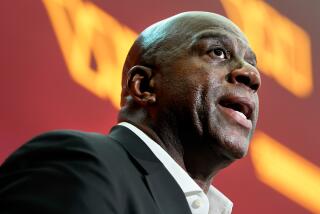Buyout Posed Problems at Josephson International
Facing losses from his Herzfeld & Stern brokerage unit--and discontent among ICM agents, who felt that their profits were paying for the parent’s missteps--Marvin Josephson began selling non-agency businesses in 1985. Three years later, he and top managers tried to buy out Josephson International for a package of cash and debt that they valued at $13.50 a share, only to have outside directors reject the bid after several shareholders filed suit.
Eventually, the group paid $14.52 cash per share in a complex deal that split off the remaining office products unit and gave Josephson 87% voting control of ICM, while 60% of its equity was marked for distribution to agents.
According to Josephson, about 30 of ICM’s 124 agents participate in company ownership. But the largest portion of stock was sold, at half the price Josephson paid for it, to ICM Chairman Jeffrey Berg, President James Wiatt and Co-Chairman Cohn. (While holding a minority of votes, the three can veto new acquisitions by Josephson. Josephson said he plans eventually to cash out much of his own stake.)
That arrangement immediately caused problems when Lynn Nesbit, the highly respected head of ICM’s New York book operation, left to join an independent agency closely allied with Creative Artists Agency because she had been excluded from the core buyout group. “Lynne felt that a negotiation should have been not just myself, Jeff, Sam and Jim,” Josephson explained. Nesbit declined to comment.
According to Berg, ICM expects to retire its $60 million in acquisition debt well before a 1996 deadline. Since going private, however, agency officers have declined to discuss finances, other than to say business has grown substantially since 1988, when Josephson International last filed reports with the Securities and Exchange Commission.
Even the number of clients is apparently a touchy subject. Josephson said the agency has 3,000 clients, and an annual report three years ago put the client list at 2,600. But Berg said a realistic count is closer to 2,000, partly because many musical groups include several members. By comparison, CAA claims about 600, though some alumni of that agency have put the count closer to 1,400--a number that CAA strongly disputes.
More to Read
Inside the business of entertainment
The Wide Shot brings you news, analysis and insights on everything from streaming wars to production — and what it all means for the future.
You may occasionally receive promotional content from the Los Angeles Times.









